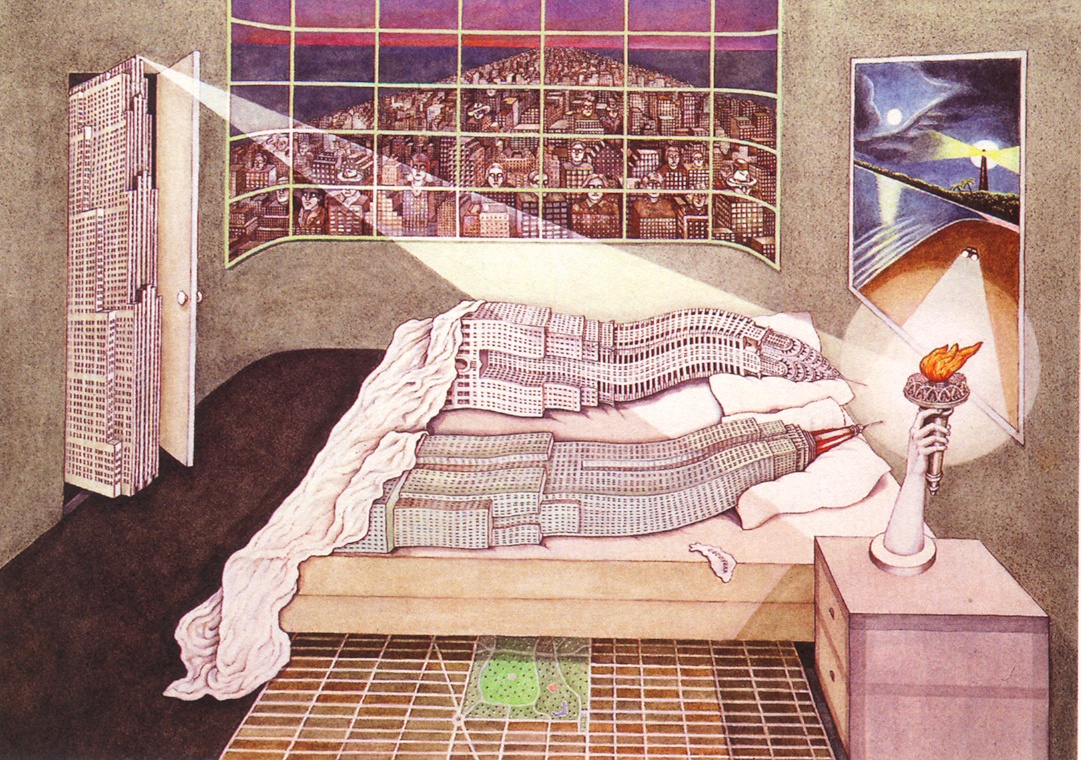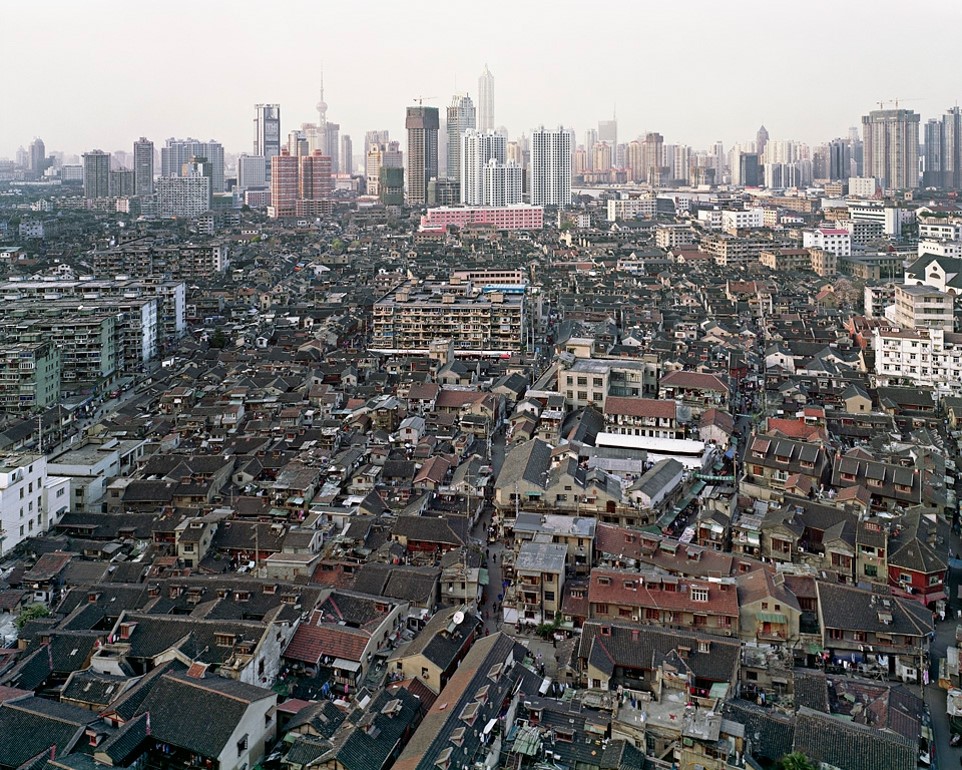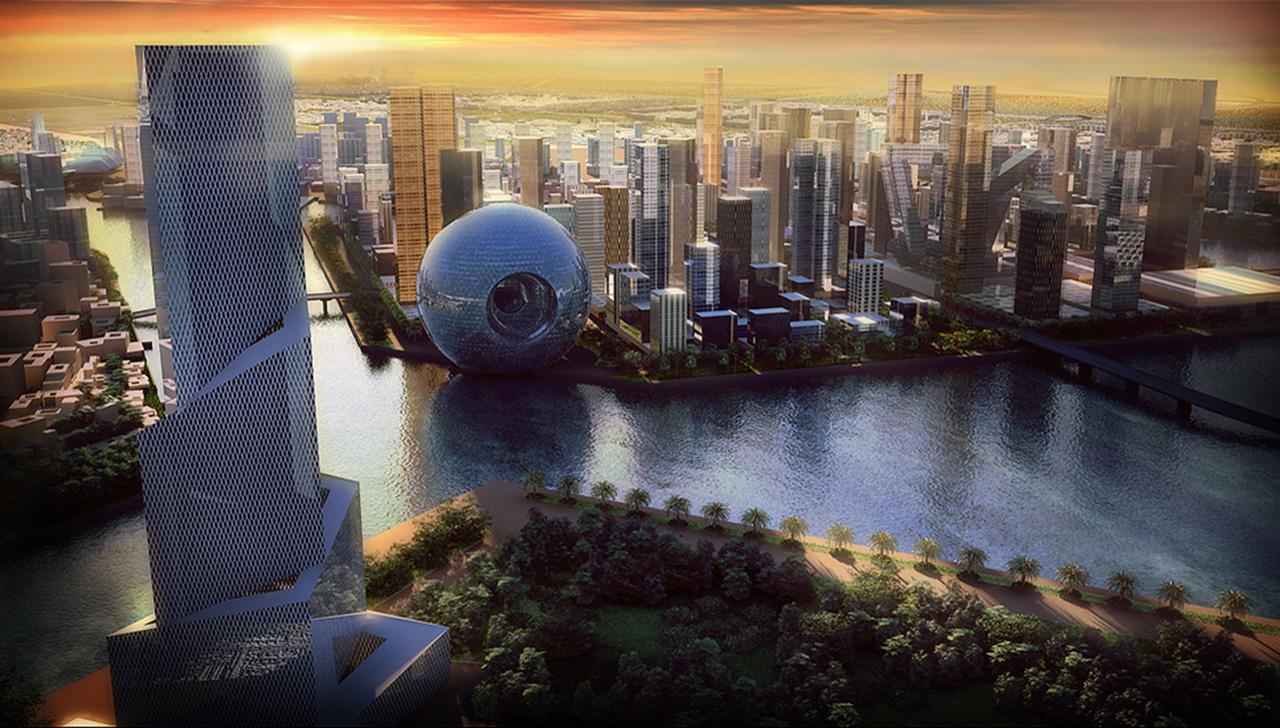Think Space
Bunovno protiv generičkog
Autor/izvor: DAZ 26/08/2015
Približava se 4. Think Space NeKonferencija, koja će se održati u Zagrebu 2. i 3. listopada, na kojoj ćemo ugostiti mnogobrojne, natjecatelje, predavače, žiratore i Think Space entuzijaste kroz niz diskusija, predavanja i izložbi. U sklopu najave, u narednom periodu donosit ćemo vam neke od prošlogodišnjih radova pristiglih na Think Space Call for Papers, koji se bave promišljanjem sprege arhitekture i novca u suvremenom svijetu.
Posebno izdanje programa Think Space, koje se ove godine realizira u sklopu projekta „Zagreb za mene“ se polako primiče svom finalu. Nedavno objavljenim rezultatima natječaja THINK public SPACE, na koji je pristiglo 73 rada iz 29 zemalja svijeta te evaluacijom radova pristiglih na Think Space Call for Papers pod temom „New publicness“, ulazimo u finale ovogodišnjeg posebnog izdanja programa. Ostvaren suradnjom s Gradom Zagrebom i Arhitektonskim fakultetom Sveučilišta u Zagrebu, program Think Space se ove godine bavio suvremenim poimanje i propitivanjem javnog i privatnog, javnih prostora, njihovih korištenja, programiranja te kreiranja i su-kreiranja.
Zadovoljstvo nam je vidjeti rast platforme suvremenih mislilaca u arhitekturi koje objedinjava Think Space, te se izrazito veselimo finalnom događaju ciklusa – Think Space NeKonferenciji, koja će se i ove godine održati u Zagrebu i to 2. i 3. listopada. Kao i uvijek, NeKonferencija će biti prigoda za okupljanje nagrađenih autora na aktualnom natječaju, razgovore i diskusije s članovima ocjenjivačkog suda te naravno dodjelu nagrada i izložbu pristiglih radova.
U sklopu priprema za NeKonfrenciju, u narednom periodu ćemo vam donositi prošlogodišnje radove pristigle i evaluirane kroz Think Space Call for Papers, koji je ima temu MONEY / NOVAC. Radovi će biti dostupni ograničeno vrijeme, a kao što i sama tema govori bave se spregom novca i financija te suvremene arhitekture i gradova, kroz različite vidove interakcije.
Bunovno protiv generičkog: dva naličja novčića kasno-kapitalističkog grada / Delirious versus Generic: the two-face coin of Late-capitalist cities
Think Space MONEY Programme CALL FOR PAPERS
Paper by Nuno Grande
Architect, PhD, Assistant Professor at DARQ/FCTUC,
Researcher at CES (Social Studies Centre), University of Coimbra, Portugal
Sažetak
Transformacija moderne metropole u ono što poznajemo kao “suvremeni grad” inspirirala je nekoliko metaforičkih koncepata zadnjih desetljeća. Među njima pojmovi “bunovan” i “generički”, oba formulirana od strane Rema Koolhaasa – u knjigama Delirious New York (1978) i Generic City (1994) – su podržavala njegove dobro poznate stavove o dvije urbane realnosti: prvoj – “grozničavoj” gradnji modernog američkog grada, vođenoj liberalnim kapitalizmom u ranom 20. stoljeću i drugoj – “anemičnoj” replikaciji kasno-modernog grada, vođenoj kasno-kapitalističkim sistemom kroz kraj 20. stoljeća. Međutim od početka novog milenija, Koolhaasove prethodne analize se čine izokrenutima. U biti, urbani boom kojem smo svjedočili posljednjih Godina, osobito na istoku, nas primorava na ponovno promišljanje uloge “bunovnog” i “generičkog” suvremenog grada. U nizu kineskih gradova, “generičko” prerasta danas u “bunovno”. U drugu ruku, u mnogim urbanim ekspanzijama ikonička ili “bunovna” arhitektura je sve više pretvorena u „generičke” proizvode. Ova je zapravo novčić s dva naličja kasno-kapitalističkog grada: bunovno / obmanjujuće se pretvorilo u „generičko”, a generičko je postalo “bunovno”.
Abstract
The transformation of the Modern metropolis in what we now call the "Contemporary city" inspired several metaphorical concepts, over the last decades. Among them, the notions of "delirious" and "generic", both coined by Rem Koolhaas - respectively in Delirious New York (1978) and Generic City (1994) - have sustained his well-known thoughts on two urban realities: the first, on the “feverish” building of the modernist American city, led by the Liberal capitalism of the early twentieth century; the second, on the “anaemic” replication of the Late-modernist city, led by a Late-capitalist system, throughout the end of that century.
However, and since the beginning of the new millennium, Koolhaas’s former analyses seem completely upturned. In fact, the urban boom that we witnessed, in recent years, especially in the East, makes us rethink the role of the “delirious” and of the "generic” in the contemporary city. In dozens of new Chinese cities, the "generic" rises today into a “delirious” degree. On the other hand, in many of those or other urban expansions, iconic or “delirious” architectures have increasingly been turned into "generic" products. This is, in fact, the two-face coin of Late-capitalist cities: the delusional became “generic”, and the generic became “delusional”.
Delirious versus Generic: the two-face coin of Late-capitalist cities
Nuno Grande
The transformation of the Modern metropolis in what we now call the "contemporary city" inspired several metaphorical concepts, over the last decades. Among them, the notions of "delirious" and "generic", both coined by Rem Koolhaas - respectively in Delirious New York (1978)[1] and Generic City (1994)[2] - have sustained his well-known thoughts on two urban realities: the first, on the “feverish” building of the modernist American city, led by the Liberal capitalism of the early twentieth-century; the second, on the “anaemic” replication of the Late-modernist city, led by a Late-capitalist system, throughout the turn of the millennium. Based on these concepts, and living up to his previous experiences in film and journalism, the Dutch “novelist” built up two film scripts around the city, giving the main role to Architecture.
In Koolhaas’s first essay, New York’s skyline is presented as a "seismograph” of the American Dream, progressively higher, glamorous and technological, even though Manhattan’s corporate architecture convenes European eclectic “clothing” styles. In the beautiful drawings of Madelon Vriesendorp, which illustrate the book, New York skyscrapers become central characters of an erotic “soap opera” - suddenly the Rockefeller Building finds The Empire State lying down next to The Chrysler, having sex...

Picture 1.
The Rockefeller Building finds the Empire State lying down next to The Chrysler, having sex.
Drawing by Madelon Vriesendorp for Delirious New York
Source: KOOLHAAS, Rem, Delirious New York. New York: The Monacelli Press, 1997 (2nd Edition)
In his essay, and looking "retroactively" to the Modern Big Apple, Koolhaas digs some of the conceptual foundations that he would later develop at his Office for Metropolitan Architecture (OMA) – “Congestion”, “Manhattanism”, “Bigness” -, but also at his dirty realist or cynic writings about global capitalism, with which himself learnt to “lie down”.
The same cynicism can also be found in Generic City, written in a time when Koolhaas’s gaze shifted to the Middle and Far-East, but also to Africa, rediscovering cities that were born or grew up without the “captivity” of an historic centre, or the "straitjacket” of an European-kind urban identity. The essay describes how, in those “other” cities, banality spread a “post-city” over ancient centres, spawning a degenerated “Miesianian” architecture, made of predictable crystal skyscrapers or dull housing boxed-blocks; but also, how different fragments of those same urban realms – like Jakarta, Seoul, Lagos, Luanda or Johannesburg – can also be found in the present extensive fabric of European cities like London, Paris, Barcelona, Lisbon or Zagreb.
Written during the decade of the The Global City[3] - the famed and optimistic book of the (also born) Dutch sociologist Saskia Sassen, edited in 1991 – the essay Generic City takes its counterpoint, putting a bitter emphasis, not on the wide urban trade networking, but on the endless urban sprawl produced by globalization. In this sense, Koolhaas’s analysis goes beyond the exceptionality of Central Business Districts (CBD), putting its focus on the homogeneity of large suburban compounds, designed as peripheral Shopping Malls, Airports or standard Hotels - through redundancy, anomie, entropy –, where one can experience the triumph of junky scenographic simulacra, mainly made of Pladur - the only material that, according to a Koolhaas’s later description, has not yet been given the proper mention in Architecture History books[4].
However, since the beginning of the new millennium, Koolhaas’s former analyses seem completely upturned. In fact, the urban boom that we witnessed, in recent years, especially in the Middle or Far-East, makes us rethink the role of the “delirious” and of the "generic” in the contemporary city.
In China, dozens of new cities, built up to house hundreds of thousands of recent “urbanites" from an emerging middle-class, are born instantly “generic". Millions of square feet of a “post-city” are built upon the devastation of old hutongs neighbourhoods, or spread through former rural territories, reproducing the same models we have learnt to condemn in the 1950-60s’ Western sub-urbanizations. Therefore, in cities like Shenzhen, Nanjing and Taiyuan, the "generic" rises today into a “delirious” degree.

Picture 2.
China: millions of square feet of a “post-city” are built upon the devastation of old hutongs neighbourhoods
Source: Nuno Grande
On the other hand, in those cities, but also in others like Dubai or Doha, urban developers desperately seek for “iconic architectures”, importing the "brand" of numerous star-system designers – like Rem Koolhaas himself – from whom they expect exceptional counterpoints to that overwhelming banality. Doomed to find a new fiction in each commission, “star-architects” have transformed what were supposed to be new urban and cultural references, into a frivolous dispute between iconic features. There, as almost everywhere, “delirious” architectures have increasingly been turned into "generic" products. Humorously, and accepting the vision of the (again also born) Dutch historian Hans Ibelings, we have to agree that “such icons are the Paris Hilton of Architecture: they are famous simply because they are famous and not because of any real content or significance"[5].
The recent real estate boom that occurred in the Arab Emirates, as well as in South Korea, Singapore, Russia and Azerbaijan, is the best proof of that conceptual upturn. At the (once bankrupted) City of Dubai, the American firm SOM designed the largest tower in the world (the Burj Khalifa Tower) within an uncharacteristic housing urban fabric; while at Abu-Dhabi, Frank Gehry will soon open a new franchise museum for the Guggenheim Foundation (at the Saadiyat Island Cultural District), repeating his jaded formal recipe tested almost two decades ago, in Bilbao.

Picture 3.
“Delirious” architecture becomes generic.
Dubai Waterfront Masterplan, Rem Koolhaas/OMA
Source: OMA Press Release
At the Emirate’s waterfront, Rem Koolhaas designed a new artificial island based on a kind of “zoo” of different delusional buildings (OMA’s Dubai Waterfront Plan), condemning them to an inevitable “generic” condition; while in Singapore, this very iconoclast architect proposes the stacking of several basic housing blocks (OMA’s Interlace Residential Complex), based on an admittedly "delusional" urban composition. We have indeed reached the moment in which the author himself inverts the meaning of his own previous critical frames, therefore converting them into dated concepts.

Picture 4.
“Generic” architecture becomes delusional.
Interlace Residential Complex, Singapore, Rem Koolhaas/OMA
Source: OMA Press Release
Now that the generic became "delusional", and the delusional became "generic", it is important to recall the novelistic vision of Madelon Vriesendorp and the symbolic contribution of buildings like The Rockefeller, The Chrysler or The Empire State Building for the founding of a seductive metropolitan urbanity. Indeed, and since those early Liberal constructions, any new Late-capitalist iconic resemblance appears nothing more than a simplistic coincidence.
Nuno Grande (1966)
Obtained his degree in Architecture at the University of Porto in 1992. Obtained his PhD, in 2009, at the Department of Architecture of the University of Coimbra (DARQ/FCTUC), where he teaches since 1993. His PhD thesis is focused on the relationship between Culture, City and Architecture. Guest Lecturer at the Faculty of Architecture of the University of Porto, since 2006, at the Urbanistics course.
Member of the Culture, Cities and Architecture Department at the Social Studies Centre (CES) in Coimbra University. Responsible for the Cultural Program on Architecture and City, in Porto 2001, European Capital of Culture. Coordinator of the Cultural Department at the Architectural Order, North Section, (OASRN).
Member of the Portuguese Section of the Association Internationale des Critiques d’Art (AICA).
Curator of the Portuguese Exhibition at the Lisbon Architecture Triennale (2007) and São Paulo Architecture Biennale (2007).
Author or editor of the following essays: O Verdadeiro Mapa do Universo: uma leitura diacrónica da cidade portuguesa (Edarq, 2002) on the evolution of Portuguese Cities; Arquitectura & Não (Caleidoscópio, 2005), a selection of his own texts; Cidade-Sofia, Cidades Universitárias em debate (Edarq, 2005), a compilation of different expert approaches on European University Cities; MuseuMania, Museus de Hoje, Modelos de Ontem (Fundação de Serralves/Público, 2009), a survey on recent Museums and Art Centres; The Urban Being: on the trails of Nuno Portas (Guimarães 2012), a portrait of the Portuguese architect and urbanist Nuno Portas.
Nuno Grande writes occasionally for architecture magazines published in Portugal (JA, Arq/a), Spain (El Croquis, Arquitectura Viva, 2G), Croatia (ORIS), France (L’Architecture d’Aujourd’hui), Switzerland (Werk, bauen und wohnen), Holland (A10) and Japan (A+U). Nuno Grande integrates a collective architectural design studio - Pedra Líquida (Liquid Stone) - as a complement of his academical and critical work.
[1] KOOLHAAS, Rem, Delirious New York: A retroactive manifesto for Manhattan. New York: Oxford University Press, Nova York, 1978
[2] KOOLHAAS, Rem, “Generic City” in S, M, L, XL. Rotterdam: 010 Publishers, 1995, pp.494-517
[3] SASSEN, Saskia. The Global City: New York, London, Tokyo. Princeton: Princeton University Press, 1991
[4] See also KOOLHAAS, Rem, “Junkspace”, in Harvard Design School guide to shopping. Köln: Taschen, 2001, pp.408-422
[5] See IBELINGS, Hans, “Globalisation or Nothing”, in Iconoclastia. News From a Post-Iconic World. (ed. J. L. Mateo). Zurich: ETH, 2009, pp.18-21
 Društvo
Društvo Društvo
Društvo